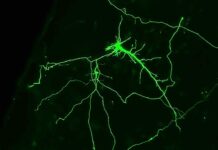Prologue: Addressing the Linguistic Imbalance
Prevailing investigations delving into the labyrinthine intricacies of language processing within the brain have exhibited an unmistakable proclivity for English. Consequently, an astonishingly diverse array of languages remains uncharted. With this context, a groundbreaking study published in Nature Neuroscience embarks on an ambitious journey to illuminate the striking similarities in cerebral activity across native speakers of a staggering 45 languages.
Decoding the Linguistic Nexus
Embedded within the complex architecture of the human brain lies the language network, a distinctive constellation of regions solely dedicated to linguistic processing. A sextet of primary areas has been pinpointed, with each showcasing a remarkable degree of selectivity for language, impervious to alternative tasks like mathematical or spatial working memory. Exhibiting a left-lateralized propensity and extensive internal integration, the language network remains remarkably isolated from other cerebral networks.
Advocating Linguistic Diversity: A Case for Multilingual Exploration
Given that English is far from a prototypical language, its peculiarities are not universally applicable across the linguistic spectrum. For example, English’s unwavering adherence to a strict word order starkly contrasts the more fluid arrangements found in numerous other languages. By widening the scope of study to encompass a diverse array of languages, researchers strive to create language localizers that cater to the wider linguistic community.
Demystifying Language Localizers
Language localizers act as a beacon, guiding researchers to the brain regions that respond to linguistic stimuli. Participants in the study were exposed to narratives in their native languages and acoustically distorted versions, concurrently engaging in non-language-related tasks. This approach enabled the assessment of the selectivity of the identified brain regions.
Unearthing the Constants: Brain Activity Synchrony Across Languages
The innovative study unveiled an intriguing consistency in the properties of the language network, including left-lateralization, selectivity, and functional integration, which transcended linguistic boundaries. While individual variability emerged, it was eclipsed by the remarkable uniformity observed across languages. Future research endeavors, bolstered by a larger cohort of participants for each language, may reveal subtle distinctions in specific regions of the language network. These discoveries have the potential to deepen our understanding of the inner workings of the enigmatic language network that resides in our brains.
Implications and Future Horizons
The revelations gleaned from this groundbreaking study provide essential insights into the universal features of the language network, transcending linguistic diversity. These findings hold immense potential for shaping our understanding of the underlying mechanisms of language processing and subsequently informing advancements in fields such as neuroscience, linguistics, and artificial intelligence.
Neuroscientific and Linguistic Implications
By uncovering the commonalities in brain activity across languages, researchers can develop a more comprehensive understanding of how the brain processes language, regardless of its specific structure or origin. This knowledge will not only help to debunk longstanding myths and assumptions about language processing but also contribute to the development of new theories that accommodate the complexities and nuances of the world’s linguistic landscape.
AI and Natural Language Processing
These discoveries may also have far-reaching consequences for the development of artificial intelligence and natural language processing. As we delve deeper into the universal principles of human language processing, we can draw inspiration from the brain’s remarkable capacity to adapt to a diverse range of languages. By incorporating these findings, AI systems could be designed to better emulate human-like language understanding and generation, improving their performance and versatility across different linguistic contexts.
Conclusion: A Step Towards Linguistic Equity
This pioneering study serves as a testament to the importance of promoting linguistic diversity in research, with the potential to revolutionize our understanding of the brain’s linguistic capabilities. By shedding light on the underlying similarities that unite the myriad languages of our world, this research paves the way for the development of more inclusive and effective tools and technologies that cater to the global linguistic community. As we continue to explore the uncharted territories of our brain’s language processing abilities, we take one step closer to achieving linguistic equity and fostering a deeper appreciation for the richness of human communication.
Google News | Telegram
















